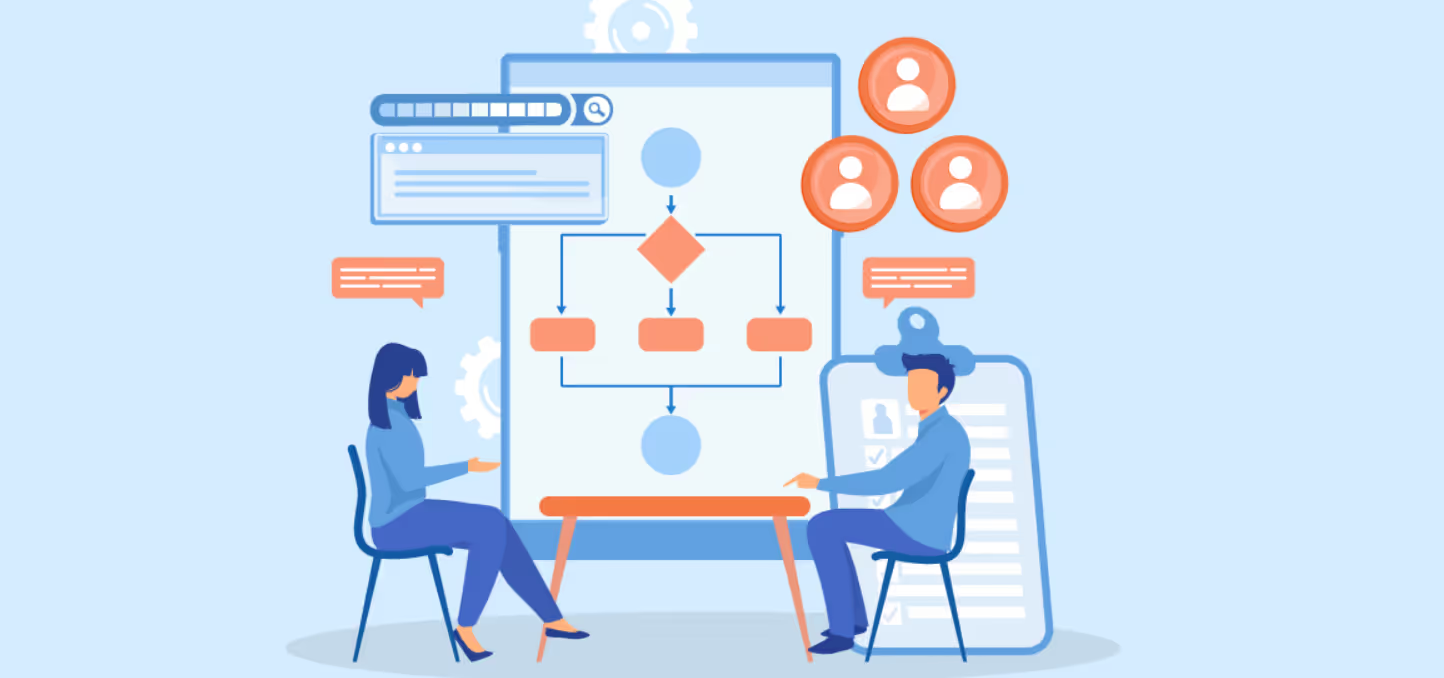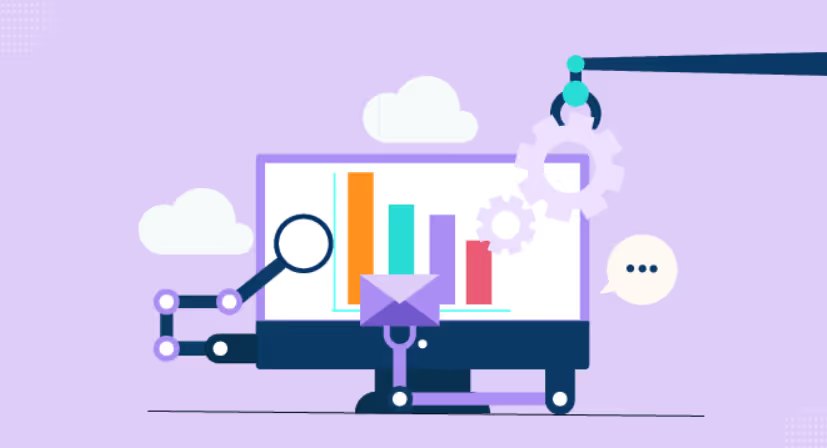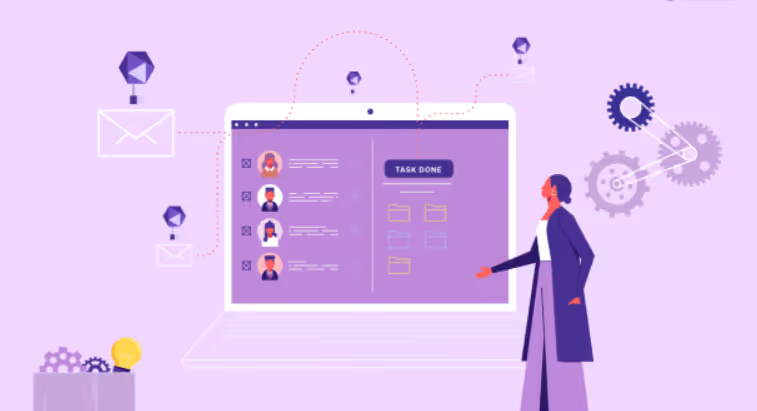In today's business world, the HR department is important for success. To stay competitive, companies are using HR automation to make things easier and improve productivity. This includes using software, automating processes, workflows, onboarding, and even using robots.

Understanding HR Automation
HR automation is the application of technology to simplify and mechanize HR procedures, lessening manual labor and decreasing the likelihood of mistakes. This revolutionary method is not merely about embracing new software but signifies a thorough change in how HR operates within a company.
The Role of HR Automation Software
HR automation software is essential for modern HR operations. It handles various tasks like payroll, benefits, recruitment, and employee management. By automating repetitive and time-consuming processes, HR professionals can concentrate on strategic initiatives that help the organization grow and succeed.
HR Process Automation
The automation of HR processes involves the use of technology to streamline repetitive tasks such as data entry, document management, and compliance tracking. This not only reduces the likelihood of errors but also accelerates the pace of HR operations. From managing employee records to handling leave requests, HR process automation ensures a seamless workflow.

From Recruitment to Retirement
HR workflow automation is a comprehensive approach that spans the entire employee lifecycle. It encompasses processes such as recruitment, onboarding, performance management, and offboarding. By automating workflows, organizations can create standardized procedures, ensuring consistency and compliance while saving valuable time.
HR Onboarding Automation
The onboarding process is a critical phase in an employee's journey, setting the tone for their entire tenure with the company. HR onboarding automation simplifies the process by digitizing paperwork, providing access to essential information, and providing smoother communication between new hires and existing teams. This not only accelerates the onboarding timeline but also contributes to a positive employee experience.
The Rise of Robotic Process Automation in HR
Integrating robotic process automation into HR functions involves deploying software robots to perform rule-based tasks. From data extraction to report generation, RPA in HR enables organizations to achieve unprecedented levels of efficiency. The technology ensures accuracy, and the ability to handle large volumes of data, freeing up HR professionals for more strategic responsibilities.

HR Automation Tools
The market is flooded with a myriad of HR automation tools, each catering to specific needs. Whether it's talent acquisition, payroll processing, or employee engagement, selecting the right set of tools is crucial. Organizations need to evaluate their unique requirements and invest in tools that align with their goals, ensuring a tailored and effective HR automation strategy.
Realizing the Benefits of Automation in HR
Adopting HR automation yields numerous benefits beyond the obvious time and cost savings. Improved data accuracy, enhanced compliance, and the ability to make data-driven decisions are just a few advantages. HR professionals can focus on important tasks, helping the organization succeed.
Challenges in Automating HR Processes
While the benefits of HR automation are substantial, organizations must also navigate challenges during the transition. Resistance to change, data security concerns, and the need for upskilling the workforce are common hurdles. Addressing these challenges requires a thoughtful approach, including comprehensive training programs and clear communication about the benefits of automation.

The Future of HR for Sustainable Growth
As technology continues to evolve, the role of HR automation will become increasingly pivotal in shaping the future of work. Embracing automation is not just a trend but a necessity for organizations aiming to thrive in the digital era. Using HR automation helps companies create a flexible and employee-focused workplace, leading to long-term growth and success.
Tailoring HR Automation to Organizational Needs
The first step in successfully implementing HR automation is to conduct a thorough assessment of the company's unique requirements. Not all businesses have identical HR processes, and a one-size-fits-all approach may not yield optimal results. Tailoring automation solutions to specific needs ensures a more targeted and efficient deployment.
Overcoming Resistance and Building Support
Resistance to change is a common challenge in any organizational transformation. HR professionals must address concerns, explain the benefits of automation, and provide thorough training. This will help ease fears and prepare employees for new technologies. Building a culture of support and enthusiasm is crucial for the success of HR automation initiatives.

Data Security in HR Automation
As HR processes involve sensitive employee information, ensuring robust data security is paramount. Organizations must prioritize privacy and implement stringent measures to protect employee data from potential breaches. Compliance with data protection regulations is not just a legal requirement but also a trust-building factor among employees.
Upskilling the Workforce
While automation streamlines many processes, it also necessitates upskilling the workforce to operate and manage the new technologies effectively. Investing in continuous learning programs ensures that employees remain competitive in the digital landscape. HR professionals should collaborate with learning and development teams to design programs that align with both individual career growth and organizational goals.
Integration of HR Automation with Existing Systems
To work well, HR automation must seamlessly integrate with existing systems to avoid isolation and data errors. This could mean integrating HR automation tools with other business systems or guaranteeing closeness with older platforms. A carefully considered integration strategy is crucial for a unified and productive workflow.

Continuous Monitoring and Optimization
HR automation is a continuous procedure that necessitates persistent observation and enhancement. It demands constant supervision and betterment. Regular evaluations of the efficiency of automated systems, collecting user feedback, and implementing required modifications are essential. These steps are vital for the enduring prosperity of HR automation. This recurring approach ensures that the technology evolves in line with the organization's needs.
Quantifying the Impact of HR Automation
To justify HR automation, organizations need to set goals and measure the benefits. This can include saving time, reducing costs, and improving employee satisfaction. By having measurable metrics, organizations can assess the success of their automation efforts and make informed decisions for future improvements.
Embracing a Holistic Approach
HR automation relies on technology, but it also involves considering organizational culture, leadership, and employee engagement. HR automation relies on technology. However, it also involves considering organizational culture, leadership, and employee engagement. It's not just about using tools and software. It's also about having a strategic mindset that values people. Additionally, it promotes teamwork and support in the workplace.

Collaboration between HR and IT Teams
Collaboration between HR and IT teams is important for successful automation projects. Collaboration between HR and IT teams is crucial for successful automation projects. HR professionals and IT experts need to work together to align technology solutions with HR goals. They also need to ensure smooth integration and address any technical issues that arise during implementation.
Future-proofing HR Automation
The landscape of technology is constantly evolving. To stay ahead of the curve, organizations must adopt a future-proof approach to HR automation. This involves staying informed about emerging technologies, assessing their relevance to HR processes, and being prepared to adapt and integrate new solutions that can further enhance efficiency and effectiveness.
Efficient Hiring and Onboarding for a Smooth Workplace
In hiring, the detailed processing is crucial. It's part of the recruitment process, and it helps manage human resources effectively. When new employees start, automated onboarding makes it easy for them. As employees do their work, these processes help everything run smoothly, making the workplace more organized.

Strategies for Successful HR Automation
In the quest for HR automation, organizations navigate a life-changing journey requiring strategic planning and meticulous execution. The following strategies delve into key aspects of this technological evolution to ensure a smooth transition and maximize benefits:
Designing Intuitive Interfaces for HR Automation
Ensuring a positive user experience is pivotal in HR automation adoption. Designing intuitive interfaces for automated processes contributes to user acceptance and efficiency. A user-centric approach fosters a seamless transition, minimizing resistance and optimizing engagement.
Continuous Improvement in HR Automation
Promoting a culture of continuous learning is crucial for sustained success in HR automation. Encouraging employees to embrace ongoing training, explore new functionalities, and share insights creates an environment of innovation. This proactive approach ensures that HR automation remains dynamic, evolving alongside organizational needs.

Streamlining HR Operations for Optimal Efficiency
Human Resource Management involves automated employee onboarding and streamlined workflows. HR tools optimize performance reviews, reducing time in HR operations. This efficient business process enhances overall organizational effectiveness, promoting smoother employee management and strategic HR functions.
Conclusion
Using HR automation can greatly benefit companies by improving efficiency and keeping up with business changes. Whether it's through HR software or robots, automation helps streamline processes and allows HR professionals to better support the entire company. Looking forward, adopting HR automation is crucial for creating a productive and resilient workplace that can effectively handle challenges. Sign up for a free trial today and experience the benefits yourself!








.avif)


